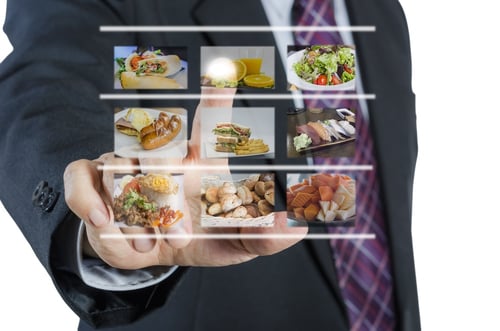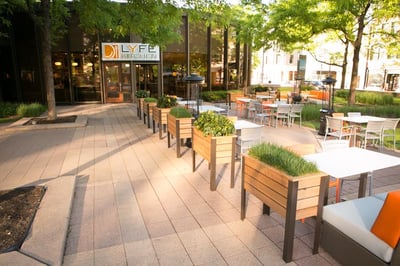It's fresh. It's made to order. And it's everywhere. From 2010 to 2015, according to Technomic, the number of fast-casual restaurants in the United States has grown 41 percent to nearly 23,000. Traditional fast-food locations grew just 5 percent in the same period, although they vastly outnumber fast casual spots.
The Oxford English Dictionary even added "fast-casual" to its online edition in 2015, along with dozens of other slang words, which means the term is widely used in the English language. But we probably won't be saying "awesomesauce" in five years; will we still be eating at fast-casual restaurants? Here's a peek at restaurant trends that experts say will shape the future of fast casual. 
1. Fast casual's rapid growth will continue.
Has fast casual maxed out the market? Not a chance, Dean Small, founder and managing partner of Synergy Restaurant Consultants, tells Hamilton Beach Commercial. "No, I think it's going to grow exponentially over the next few years," he says. The tastes of Gen Y, millennials and Gen Z have evolved, he says, and fast-food chains are struggling to elevate their offerings to match. "So you have this void in the marketplace where people are looking for good, high-quality food that's still fast, and it's affordable," he says. "Fast casual really is a sweet place to be right now."
There's interest in fast casual overseas as well, although growth has been slow, Euromonitor finds. In the U.K., "it's not big business at all in the moment," says Peter Backman. He's managing director of Horizons, a London-based firm that provides information and insights about the foodservice market. Yet some concepts are growing in popularity, he says, such as Mexican cafe Chilango.
Euromonitor identifies Western European countries as the largest markets, namely Germany, the United Kingdom and France. But the fastest-growing markets for fast casual are New Zealand, Venezuela and Australia.
2. Asian cuisines will inspire new fast-casual concepts.
Burritos, sandwiches and salads can't reign forever as hot restaurant trends. "I think Asian has a lot of growth potential," Small says, as does fast-casual Italian. And, he adds, "I think the real sleeper is Indian food." While still "mysterious" to many American customers, he says, "I think once people start getting over any stereotypes associated with it... they're going to be very impressed with the quality of the food." He's seeing operators develop Chipotle-style approaches to Indian and Middle Eastern cuisine.
3. Conscious eating will drive even more fast-casual growth.
Why do Americans love fast casual? One reason is growing health-consciousness. A recent survey by AlixPartners found that 37 percent of consumers said they plan to eat more fruit and vegetables, 33 percent said they want to consume less sugar and 30 percent said they plan to eat less fast food.
Beyond that, people want a better relationship with their plates. "We Brits, and I think Americans too, are actually rediscovering food in the way that the French and the Italians approach food," Backman says: adopting "a view that food comes from the earth, and it's an expression of your personality."
 Restaurateurs are listening. Small points to brands like Lemonade — a Los Angeles-based chain that serves seasonal California comfort food — and Dig Inn, based in New York, which serves an affordable farm-to-table menu. Both offer veggie- and grain-centered, cafeteria-style meals for about $10. LYFE Kitchen, which Synergy helped launch, offers sustainably sourced dishes that are all under 600 calories.
Restaurateurs are listening. Small points to brands like Lemonade — a Los Angeles-based chain that serves seasonal California comfort food — and Dig Inn, based in New York, which serves an affordable farm-to-table menu. Both offer veggie- and grain-centered, cafeteria-style meals for about $10. LYFE Kitchen, which Synergy helped launch, offers sustainably sourced dishes that are all under 600 calories.
"People want authenticity, and they want to know where their food comes from," Small says — although "at the end of the day, flavor rules."
4. Food costs may become a bigger challenge for fast casual restaurants.
Customers are willing to pay a premium for fresh, clean and made-to-order food. The average fast-casual ticket is between $9 to $13, compared to $5 for fast food. But it also costs a lot to meet their expectations. Chipotle’s food costs represented about 35 percent of revenue in 2014 — "a level more in line with fine dining," the Wall Street Journal reports. That hasn't slowed the chain's growth, but may prove a challenge in the future for Chipotle and other fast-casual restaurants.
One solution: do everything possible to cut food waste. Fast-casual salad chain Salata trains its employees to be meticulous about how they cut produce to minimize waste. The chain also introduced a smaller size after the founder said he couldn't finish a regular himself; the small salad rapidly became 30-35 percent of overall sales, Fast Casual reports.
5. Fast-casual chains will increasingly compete for personnel, real estate and brand recognition.
A restaurant's success depends on the "three Ps," Small likes to say: the people, the place and the product. While fast-casual restaurants can operate with fewer people than sit-down casual places, because most don't offer full table service, having dedicated, high-quality employees is essential. With minimum wages rising and restaurants competing for people, staffing is becoming a challenge for many operators, Small says.
Another challenge, Small says, is that "everybody wants an A-plus site location." Competition for space and rising real estate prices mean that many independent restaurants or start-ups will be priced out of the market, he says.
Most important, he says, is having an authentic, appealing brand and product. "If you don't stand out... then you fall into that sea of same," he warns.
If you have a fun or interesting story idea or recipe, a story about your restaurant or a customer experience, we would love to hear from you. The best stories and recipes will be published on our blog and distributed to the HBC Community, nationally and potentially internationally. Further, we will reference your name and establishment for bringing it to our attention. A little publicity can always help to grow your business and awareness.


